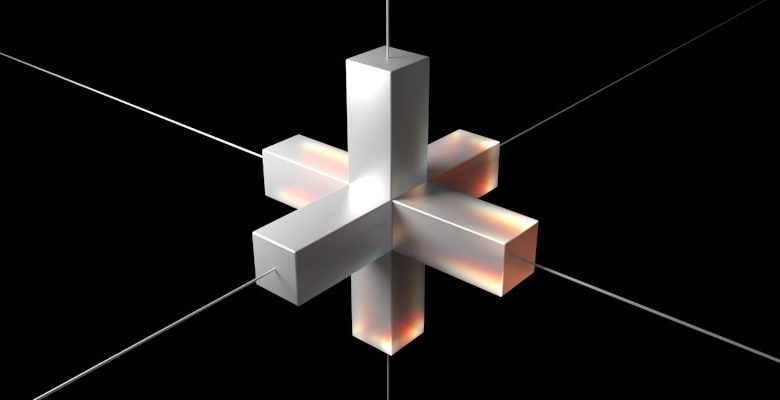Exploring Cross-Chain Solutions in DeFi

- Understanding the importance of interoperability in DeFi
- Exploring the challenges of cross-chain integration in decentralized finance
- Comparing popular cross-chain solutions in the DeFi ecosystem
- The role of bridges in enabling seamless cross-chain transactions in DeFi
- Benefits and limitations of utilizing cross-chain solutions in decentralized finance
- Future outlook: How cross-chain solutions are shaping the future of DeFi
Understanding the importance of interoperability in DeFi
Interoperability is a key concept in the world of decentralized finance (DeFi). It refers to the ability of different blockchain networks and DeFi protocols to seamlessly communicate and interact with each other. This is crucial for the growth and scalability of the DeFi ecosystem, as it allows users to access a wide range of financial services and products across various platforms.
By enabling interoperability, DeFi projects can leverage the strengths of different blockchains and protocols, creating a more robust and efficient ecosystem. This can lead to increased liquidity, lower transaction costs, and enhanced security for users. Additionally, interoperability opens up new opportunities for innovation and collaboration within the DeFi space.
One of the main challenges in achieving interoperability is the lack of standardized protocols and communication channels between different blockchains. However, with the development of cross-chain solutions, such as bridges and oracles, DeFi platforms can now overcome these barriers and enable seamless interoperability between disparate networks.
Exploring the challenges of cross-chain integration in decentralized finance
Cross-chain integration in decentralized finance (DeFi) presents several challenges that need to be addressed for the seamless operation of the ecosystem. One of the main challenges is the lack of interoperability between different blockchains, which hinders the efficient transfer of assets across chains.
Another challenge is the issue of security and trust when moving assets between chains. Users need to have confidence that their assets will be safe during the transfer process, and that there will be no risk of loss or theft. This requires robust security measures and smart contract audits to ensure the integrity of the cross-chain transactions.
Scalability is also a significant challenge in cross-chain integration, as the current infrastructure of many blockchains may not be able to handle the volume of transactions required for seamless cross-chain operations. This can lead to delays, high transaction fees, and overall poor user experience.
Moreover, the lack of standardization and uniform protocols across different blockchains makes it challenging to develop cross-chain solutions that work seamlessly across all networks. This leads to fragmentation and inefficiencies in the DeFi ecosystem, hindering its growth and adoption.
Comparing popular cross-chain solutions in the DeFi ecosystem
When it comes to cross-chain solutions in the DeFi ecosystem, there are several popular options that are frequently compared by users and developers. Let’s take a closer look at some of these solutions to understand their key features and differences.
- Cosmos (ATOM): Cosmos is a well-known cross-chain solution that aims to create an interconnected network of blockchains. It utilizes a unique consensus algorithm called Tendermint, which helps in achieving fast transaction speeds and high scalability. Cosmos also offers a user-friendly interface for developers to build custom blockchains and connect them to the Cosmos Hub.
- Polkadot (DOT): Polkadot is another popular cross-chain platform that enables different blockchains to transfer messages and value in a trustless manner. It uses a relay chain to connect multiple parachains, allowing for seamless interoperability between different networks. Polkadot’s governance model and staking mechanism are also noteworthy features that attract users.
- Wanchain (WAN): Wanchain focuses on bridging the gap between isolated blockchains by providing a decentralized platform for cross-chain transfers. It supports various assets, including Bitcoin and Ethereum, through its interoperability protocols. Wanchain also offers privacy features and smart contract capabilities to enhance its functionality.
Each of these cross-chain solutions has its strengths and weaknesses, making it essential for users to evaluate their specific requirements before choosing a platform. Whether you prioritize speed, security, or interoperability, there is a cross-chain solution in the DeFi ecosystem that can meet your needs.
The role of bridges in enabling seamless cross-chain transactions in DeFi
Cross-chain transactions in DeFi have become increasingly popular as users seek to access a wider range of assets and opportunities across different blockchains. One of the key components that enable seamless cross-chain transactions is the use of bridges. Bridges act as connectors between different blockchains, allowing users to transfer assets from one chain to another without the need for a centralized intermediary.
By utilizing bridges, users can take advantage of the unique features and benefits offered by various blockchains, such as scalability, security, and privacy. This interoperability between chains opens up a world of possibilities for DeFi users, enabling them to diversify their portfolios and access new investment opportunities.
Furthermore, bridges play a crucial role in enhancing liquidity across different chains. By facilitating the movement of assets between blockchains, bridges help to reduce fragmentation and increase efficiency in the DeFi ecosystem. This increased liquidity benefits users by providing better access to trading opportunities and reducing slippage.
Overall, bridges are essential components in the DeFi space, enabling users to seamlessly navigate between different blockchains and access a diverse range of assets and opportunities. As the DeFi ecosystem continues to evolve, the role of bridges will become even more important in ensuring smooth and efficient cross-chain transactions.
Benefits and limitations of utilizing cross-chain solutions in decentralized finance
Utilizing cross-chain solutions in decentralized finance (DeFi) comes with a range of benefits and limitations that are important to consider for those looking to expand their operations. Below are some key points to keep in mind:
- Benefits: Cross-chain solutions enable interoperability between different blockchain networks, allowing for the seamless transfer of assets and data. This can help to increase liquidity and efficiency in the DeFi ecosystem, opening up new opportunities for users to access a wider range of financial products and services.
- Limitations: Despite the advantages, there are also limitations to consider. One of the main challenges is the complexity of implementing cross-chain solutions, which can require significant technical expertise and resources. Additionally, there may be security risks associated with moving assets between different chains, as well as potential issues with scalability and transaction speeds.
- Considerations: Before incorporating cross-chain solutions into your DeFi strategy, it’s important to carefully weigh the benefits and limitations. Conduct thorough research, seek advice from experts, and consider the specific needs of your project to determine whether cross-chain solutions are the right fit for you.
Overall, while cross-chain solutions offer exciting possibilities for expanding the capabilities of DeFi, it’s essential to approach them with caution and a clear understanding of the potential risks involved. By carefully considering the benefits and limitations, you can make informed decisions that will help to drive the successful integration of cross-chain solutions into your DeFi ecosystem.
Future outlook: How cross-chain solutions are shaping the future of DeFi
Looking ahead, the future of decentralized finance (DeFi) is being significantly influenced by the emergence of cross-chain solutions. These innovative technologies are revolutionizing the way different blockchain networks can interact and exchange value seamlessly. By enabling interoperability between various blockchains, cross-chain solutions are unlocking new possibilities for DeFi applications and expanding the reach of decentralized finance across the entire blockchain ecosystem.
One of the key benefits of cross-chain solutions is the ability to access a wider range of assets and liquidity pools from different blockchains. This opens up opportunities for users to diversify their portfolios and access new investment opportunities that were previously unavailable within a single blockchain network. As a result, DeFi platforms are becoming more interconnected and inclusive, driving greater adoption and growth in the decentralized finance space.
Moreover, cross-chain solutions are enhancing the scalability and efficiency of DeFi applications by reducing bottlenecks and congestion on individual blockchain networks. By allowing for the seamless transfer of assets and data across different chains, these solutions are optimizing the performance of decentralized applications and improving the overall user experience. As a result, DeFi platforms are becoming more accessible and user-friendly, attracting a broader range of participants to the decentralized finance ecosystem.
Overall, the future outlook for DeFi is increasingly dependent on the development and implementation of cross-chain solutions. These technologies are reshaping the landscape of decentralized finance by enabling greater interoperability, scalability, and efficiency across multiple blockchain networks. As cross-chain solutions continue to evolve and mature, they will play a pivotal role in shaping the future of DeFi and driving further innovation and growth in the decentralized finance space.



